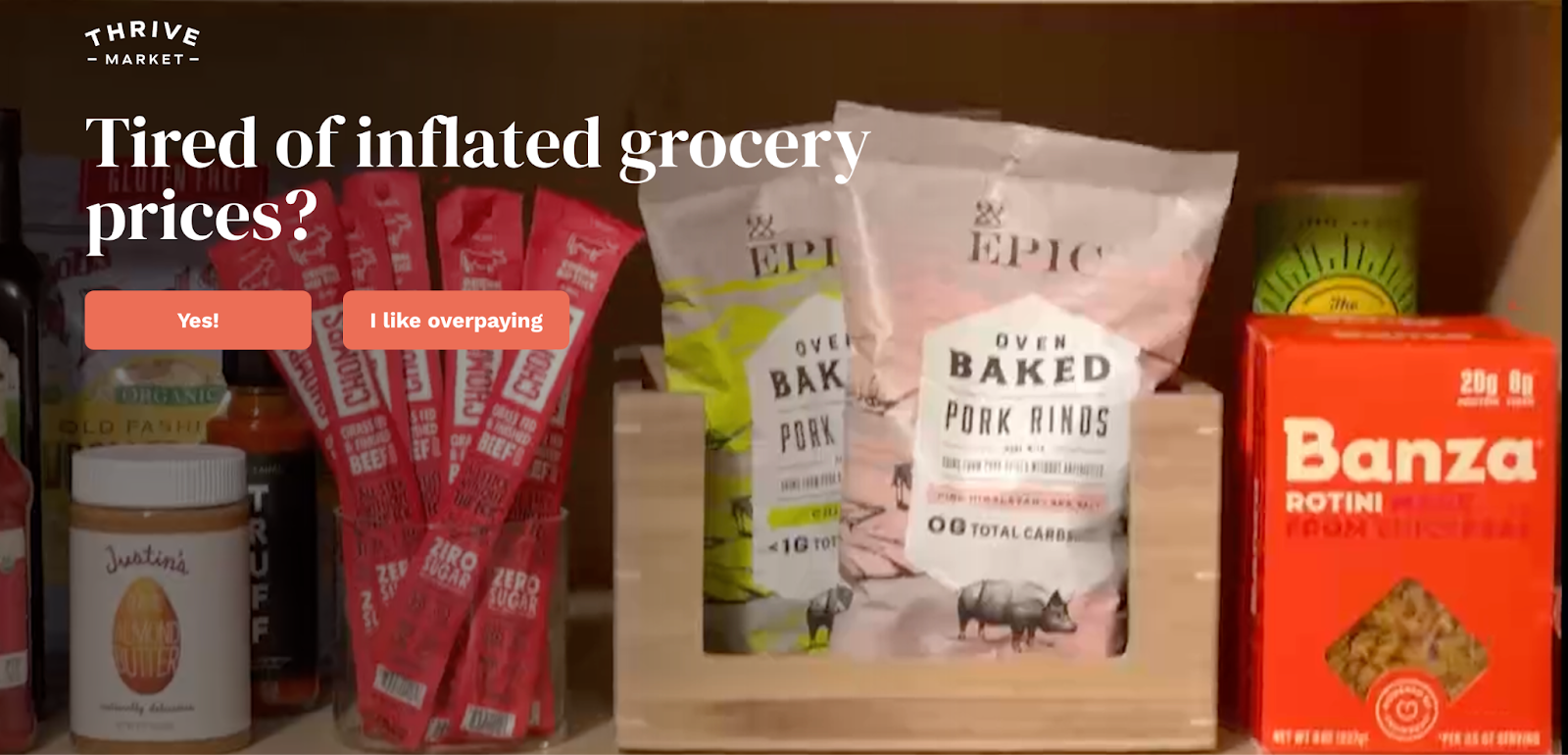The food industry is witnessing an undeniable trend: the global surge in demand for organic foods.
The organic movement has emerged as one of the biggest trends in the past few decades and is here to stay.
According to Statista, sales of organic foods have witnessed a surge of over 100 billion U.S. dollars spent since 2000, with North America accounting for the largest share of organic purchases.
Although there is ongoing debate surrounding the benefits of consuming organic products over conventional ones, organic food is no longer a niche offering. It has become mainstream in grocery stores worldwide. This rise has been encouraged by consumers’ increasing health consciousness, along with improved living standards and supportive government policies.
This shift to organic is a change in mindset toward healthier, environmentally friendly eating habits.
Organic products, free from chemical pesticides, synthetic fertilizers, or GMOs, offer an environmentally friendly choice reminiscent of traditional agricultural practices before the “green revolution” brought increased chemical use. The move toward organic is driven by a growing awareness of its benefits for the planet and personal health, making it not just a choice but a lifestyle. As the organic food market grows, brands have a golden opportunity to innovate and meet this demand, provided they truly understand what today’s conscious consumers are seeking.
The Drive Behind Organic Food Consumption
Key Motivators
- Health Consciousness: The quest for healthier lifestyles is perhaps the strongest driver behind organic food consumption. Consumers associate organic foods with fewer pesticides, no antibiotics, and a higher nutritional value, making them a preferred choice for maintaining health.
The consumption value of organic packaged food in the United States is expected to grow from 21.3 billion U.S. dollars in 2021 to over 25 billion dollars by 2025. —Source: Statista
- Environmental Concerns: With climate change and environmental degradation in the headlines, consumers are increasingly opting for products that promise a smaller environmental footprint. Organic farming practices, which promote biodiversity and soil health while reducing pollution and conserving water, resonate with environmentally conscious consumers. This shift is not just theoretical; it’s reflected in purchasing patterns, with a Nielsen report highlighting that 48% of U.S. consumers are willing to change their consumption habits to reduce environmental impact.
- Perceived Quality: The perception of better taste and overall quality is another significant motivator. Consumers often report that organic produce tastes fresher and more flavorful due to the absence of synthetic pesticides and fertilizers. This perceived quality extends to meat and dairy products, where organic options are believed to be superior due to the natural diet and humane treatment of animals.
58% of the respondents in Singapore stated that they bought organic food products because they believed they were healthier and more nutritious. —Source: Rakuten Insight
- Ethical Considerations: Beyond personal and environmental health, ethical concerns also play a role. Consumers are increasingly aware of the impact of their choices on animal welfare and farm workers’ rights. Choosing organic is seen as a way to support farming practices that are kinder and fairer to animals and people. Fair Trade certification, for example, has gained popularity as it assures consumers that the products they buy are produced in ways that meet specific social, economic, and environmental standards.
Impact of Consumer Knowledge on the Demand for Organic Food
Consumer knowledge significantly influences buying behavior. The more consumers know about the benefits of organic foods—not just in terms of health but also regarding environmental impact and ethical considerations—the more likely they are to purchase them. Education plays a crucial role here. Studies show that consumers who understand the organic label are more willing to pay a premium for organic products. Many studies have found that informed consumers are more likely to perceive organic foods as tastier and more nutritious, boosting their purchasing intention.
Knowledge about the negative aspects of conventional farming—such as using GMOs, pesticides, and the potential for antibiotic resistance—also propels consumers toward organic options. Brand managers and marketers can leverage this by providing transparent, educational content highlighting organic foods’ advantages, enhancing consumer knowledge, and positively affecting buying behavior.
On the other hand, a low level of consumer understanding of what “organic” truly means, coupled with the minor share of organic farmland, has limited the sector’s growth in many regions. In Japan, the introduction of the “Organic JAS” certification by the Ministry of Agriculture, Forestry, and Fishery (MAFF) has expanded the range of products that can be marketed as organic, including a recent extension to alcoholic beverages. Despite efforts to increase awareness and the allowance of certified organic imports to diversify the market, the strong association of organic foods with the broader health food market has muddled consumer perception, impacting demand.
The organic food market is propelled by a complex interplay of health, environmental, quality, and ethical motivations, all amplified by consumer knowledge.
For brands in this space, understanding and addressing these motivations through clear, honest communication and educational initiatives can create a loyal customer base committed to organic consumption.
The Role of Perceived Norms
Perceived norms—or the impact of societal influences and peer opinions—significantly shape consumer preferences, especially in organic food consumption. This influence operates on the premise that individuals are likely to adopt behaviors seen as acceptable or desirable within their social circles or society.
Here’s how these dynamics unfold in the context of organic foods.
- Influence of Social Circles
Consider the scenario of a group of friends who prioritize sustainability and health-conscious living. When one member starts buying organic products, citing benefits like reduced chemical exposure and support for ethical farming practices, it’s not uncommon for the rest of the group to follow suit. This behavior is partly driven by the desire to align with the group’s values and partly by the newfound awareness of the benefits of organic products. In this way, peer influences can significantly boost the consumption of organic foods within a social circle.
- Celebrity Endorsements and Social Media
Celebrities and influencers endorsing organic brands on social media also contribute to perceived norms. When public figures known for their health-conscious or environmentally friendly lifestyles share their preference for organic products, their followers will likely perceive organic consumption as a desirable norm.
- Workplace and Community Initiatives
Workplaces that offer organic food options in cafeterias or vending machines create a normative environment for organic consumption. Similarly, community initiatives, such as local organic farmer’s markets, promote a culture of organic food consumption within the community. These settings introduce individuals to organic options in a manner that suggests their acceptance and preference by the larger group, encouraging individuals to make similar choices in their personal lives.
- Educational Campaigns and Public Policies
Public policies and educational campaigns promoting organic farming and consumption also play a pivotal role. When governments endorse organic farming practices and launch campaigns to educate the public about their benefits, it creates a societal norm that values sustainability and health, nudging consumers toward organic products. The success of such initiatives can often be seen in increased sales of organic products following government endorsements or educational campaigns.
The Relationship Between Perceived Price and Purchasing Decisions
The price of organic foods often carries a premium compared to conventional products, primarily due to higher production costs, stricter regulations, and lower economies of scale. This perceived price difference is critical in consumer purchasing decisions, especially as inflation rates rise globally. Consumers are increasingly price-sensitive, weighing the perceived benefits of organic foods against their higher price tags.
With 9.12 million acres, India is home to 30 percent of all organic producers globally. —Source: Statista
One way consumers navigate this is through selective purchasing. The “Dirty Dozen” list, published annually by the Environmental Working Group, highlights fruits and vegetables with the highest pesticide residues. Health-conscious consumers often prioritize buying organic versions of these items to minimize exposure to harmful chemicals, even if they don’t purchase organic products across the board. This strategy reflects a nuanced approach to organic shopping, where the perceived health benefits justify the premium price for certain high-risk items.
Consumers’ Willingness to Pay a Premium for Organic Products
Despite price sensitivity, a significant segment of consumers is willing to pay a premium for organic products. Several factors drive this willingness:
- Health Benefits: Consumers prioritizing health and wellness are more inclined to invest in organic foods, as they’d rather avoid pesticides and chemicals than save money.
- Environmental Concerns: Environmentally conscious people purchase organic foods to support sustainable farming practices, even if it means spending more.
- Ethical Considerations: Shoppers who place a premium on animal welfare and fair labor practices are often willing to pay higher prices for organic products that align with their ethical standards.
However, the current economic climate has intensified the dilemma faced by these consumers. For example, the cost of living crisis in the UK has forced many to rethink their spending habits, including food. With budgets tightening, the decision to purchase organic products becomes more deliberate, with consumers weighing the perceived value and benefits more carefully against the backdrop of their overall financial situation.
Inflation worldwide exacerbates this situation, affecting not just the affordability of organic products but also the perception of their value. Brands and retailers are responding by highlighting the added value of organic products in terms of health, environmental, and ethical benefits, aiming to justify the premium prices. Some brands offer more affordable organic lines or promotions to make organic options accessible to price-sensitive consumers.
How Easy Availability Impacts Purchase Decisions
The accessibility of organic products significantly impacts consumer buying behavior, acting as both a facilitator and a barrier to adopting organic lifestyles. As organic foods become more readily available, convenience is crucial in encouraging consumers to make organic choices more regularly.
Supermarket Integration
Including organic sections in mainstream supermarkets and grocery stores has been a game-changer for organic food consumption. Major retailers, such as Walmart in the United States and Tesco in the United Kingdom, now boast extensive organic offerings. This mainstream availability means that consumers no longer need to seek out specialty stores for their organic needs, making organic products a convenient choice for the everyday shopper. Organic options alongside conventional ones also allow for easy comparison, making the organic choice more deliberate and informed.
Online Retail and Subscription Services
The rise of online shopping and subscription-based organic delivery services has simplified access to organic foods. Companies like Thrive Market in the U.S. and Abel & Cole in the U.K. specialize in delivering organic and natural products directly to consumers’ doorsteps. This convenience has opened the organic market to busy individuals who might not have the time to shop at physical stores or those living in “food deserts” where organic options are scarce.
Thrive Market Case Study: Revolutionizing Healthy Living Online
Launched in 2014 as a mission-driven brand, US-based Thrive Market overcame traditional barriers to healthy living by leveraging an online, membership-based marketplace for organic food. It combined the benefits of quality and affordability with a paid membership, offering over 5,000 health-conscious products.
 Source: Thrive Market’s Website
Source: Thrive Market’s WebsiteWith over 70+ filters to shop by dietary preferences like gluten-free, vegan, or paleo, the marketplace focuses on organic, non-GMO, and sustainably sourced products.
Big on philanthropy, Thrive Gives has raised over $3.5 million for food access and environmental sustainability initiatives and also established a COVID-19 Relief Fund, raising over $1 million to support affected families.
 Source: Thrive Market’s Website
Source: Thrive Market’s WebsiteSuccess Factors for Thrive Market include:
- A mission-driven approach, starting with a clear, resonant mission.
- Membership model that builds loyalty and a sense of community.
- Quality products that cater to niche markets.
- The sweet spot between affordability and profitability.
- Social responsibility initiatives that have a positive social impact.
- Adaptability to be flexible and responsive to market changes and challenges.
- Community engagement, fostering a strong, engaged customer base committed to the brand’s mission.
Farmers’ Markets and Local Farms
Farmers’ markets and direct-from-farm sales also enhance the accessibility of organic foods, connecting consumers directly with producers. This ensures freshness and fosters community and trust between consumers and growers. For example, community-supported agriculture (CSA) programs allow consumers to subscribe to the harvest of a specific farm or group of farms, often receiving a weekly or monthly delivery of fresh organic produce. This model supports local farmers and reduces the carbon footprint of transporting food long distances.
Impact on Consumer Behavior
The increased availability of organic products encourages a shift in consumer behavior. When organic foods are as easy to purchase as conventional ones, the barrier of inconvenience is removed, making it more likely for consumers to choose organic options regularly. Additionally, the visibility of organic products in mainstream shopping venues raises awareness and educates consumers about organic options, further influencing buying behavior.
Farm-to-Fork Restaurant Concepts Gain Popularity
Restaurants are also banking on the wellness trend by offering organic food to tap into a growing consumer trend that prioritizes health, sustainability, and quality in dining experiences. Success in this niche leans on a commitment to authenticity, transparent sourcing, and a clear communication strategy that highlights the benefits of organic ingredients to health-conscious patrons.
Key Factors for Success:
- Authenticity: Their commitment to organic principles, from sourcing to serving, must be genuine.
- Transparency: Sharing the origin of ingredients with customers, reinforcing trust and loyalty.
- Quality: Prioritizing the quality and flavor of organic ingredients to enhance the culinary experience.
- Marketing: Effectively communicating the benefits and unique selling points of organic dining.
Successful Example from the UK: Daylesford Organic
Daylesford Organic, an award-winning farm-to-table restaurant, has become known for organic dining in the UK. Daylesford operates with a philosophy deeply rooted in organic farming, sustainability, and ethical sourcing, offering a seasonal menu that celebrates the best of what their farm and local producers have to offer.
 Source: Daylesford
Source: DaylesfordWhy Daylesford Succeeds?
- Integrated Approach: Daylesford is part of an organic farm, ensuring a fresh and traceable supply chain directly to the restaurant table.
- Seasonal Menus: By adjusting its menu based on seasonal availability, Daylesford keeps its offerings fresh, dynamic, and harmonious with nature.
- Educational Engagement: Beyond serving food, Daylesford engages customers with cooking classes and farm tours, deepening the connection between the food they eat and its origins.
- Brand Loyalty: Through consistent quality and a strong ethical stance, Daylesford has cultivated a loyal customer base that values its commitment to organic principles.
Purchase Intention and Actual Buying Behavior
Understanding the journey from purchase intention to actual buying behavior is crucial for brands that capitalize on the organic market. This transition is influenced by various factors, including consumer attitudes toward organic foods, which mediate final purchasing decisions.
From Intention to Action
Purchase intention refers to a consumer’s plan or decision to buy a specific product. In the context of organic foods, this intention is often driven by health concerns, environmental awareness, ethical considerations, or a combination of these factors. However, the translation of this intention into actual buying behavior is not always straightforward. The gap between intention and action can be influenced by several barriers, such as price perception, availability, and sometimes, a lack of understanding of the benefits of organic products.
For instance, a consumer might intend to buy organic fruits and vegetables after learning about the harmful effects of pesticides. Yet, if they find the price prohibitively high or the products difficult to locate in their regular grocery store, their purchase intention may not result in a purchase. This scenario underscores the importance of addressing the motivation to buy organic and the practical aspects that facilitate or hinder the actual buying process.
The Mediating Role of Consumer Attitudes
Consumer attitudes toward organic foods significantly mediate the transition from purchase intention to actual buying behavior. These attitudes encompass beliefs about the benefits of organic foods, personal values related to health and environmental sustainability, and perceptions of organic food quality. A positive attitude toward organic foods can strengthen the intention to purchase by reinforcing these products’ perceived value and benefits.
Attitudes can also help bridge the gap between intention and action by mitigating the impact of barriers like higher prices or lower availability. For example, a consumer who strongly values the environmental benefits of organic farming may be more willing to pay a premium or go out of their way to find organic products. In this way, a strong positive attitude toward organic foods can convert purchase intentions into actual buying actions, even in the face of obstacles.
Sociodemographic Influences on Organic Food Purchasing Patterns
The decision to purchase organic food is not made in a vacuum; it is significantly influenced by sociodemographic factors such as age, gender, income, and education level. Understanding these influences can help brands tailor their marketing strategies to reach and engage their target audiences more effectively.
Age
Age plays a pivotal role in organic food purchasing patterns. Younger consumers, particularly Millennials and Gen Z, have shown a greater inclination toward organic products, driven by their heightened awareness of environmental issues and health concerns. This demographic is more likely to prioritize sustainability and ethical production practices in their purchasing decisions, viewing organic foods as a healthier, more environmentally friendly option. In contrast, older generations may not prioritize organic options to the same extent, possibly due to traditional shopping habits or differing values.
Gender
Gender differences also emerge in organic food consumption. Studies have consistently found that women are more likely than men to buy organic foods. This trend can be attributed to several factors, including a greater focus on health and diet among women and their role in household purchasing decisions. Women are often the primary grocery shoppers in a family and may choose organic products to promote a healthier lifestyle for themselves and their families.
Income
Income is a critical determinant of organic food purchasing behavior. Generally, organic foods are perceived as more expensive than their non-organic counterparts, which can limit their purchase to consumers with higher disposable incomes. Those with greater financial resources are more able to absorb the premium prices of organic products, making income a significant factor in the likelihood of purchasing organic. However, the growing availability of more affordable organic options and the increasing prioritization of health and environmental benefits over cost could broaden the appeal of organic foods across income brackets.
Education Level
Finally, education level significantly impacts organic food purchasing patterns. Higher levels of education correlate with a greater likelihood of buying organic foods. Educated consumers are more likely to be aware of the benefits of organic foods, understand labeling, and value the environmental and health advantages these products offer. This knowledge and awareness drive their purchasing decisions, making them more inclined to choose organic options.

Global Snapshot of Organic Food Trends, Challenges and Opportunities.
| Country | Leading Brands | Consumer Behavior Trends | Government Policies/Support | Challenges & Opportunities |
| United States | Whole Foods, Organic Valley | High demand for organic snacks | Federal organic certification program | Opportunity: Rising health awareness; Challenge: High price sensitivity |
| United Kingdom | Yeo Valley, The Soil Association | Preference for locally sourced organics | Government subsidies for organic farmers | Opportunity: Strong local brand loyalty; Challenge: Brexit-related supply chain issues |
| Japan | Oisix, Natural House | Health-conscious buying habits | Strict organic certification standards | Opportunity: Aging population focusing on health; Challenge: Limited arable land |
| India | Organic India, 24 Mantra Organic | Growing awareness of health benefits | Support for organic farming initiatives | Opportunity: Large agricultural sector; Challenge: Fragmented market structure |
| Singapore | Zenxin Organic, Quan Fa Organic Farm | High willingness to pay for quality | Incentives for organic importers and retailers | Opportunity: High income levels; Challenge: Premium pricing |
| Thailand | Lemon Farm, Sunshine Market | Cultural preference for organic produce | Government-led organic agriculture promotion | Opportunity: Rich agricultural heritage; Challenge: Competition with conventional produce |
| Vietnam | Organik Da Lat, Vinamit | Rising consumer demand for food safety | Policies encouraging organic production | Opportunity: Growing middle class; Challenge: Developing distribution channels |
| Philippines | Healthy Options, The Green Grocer | Interest in organic for health and wellness | Support for organic agriculture under national law | Opportunity: Increasing health consciousness; Challenge: Awareness and availability |
| Indonesia | Sayurbox, Organic Village | High interest in sustainable consumption | National strategy for organic farming development | Opportunity: Large consumer base; Challenge: Supply chain inefficiencies |
| China | Tony’s Farm, Green & Safe | Concerns over food safety driving organic purchases | Government support for organic certification | Opportunity: Rapid urbanization; Challenge: Food safety concerns |
Future Outlook
Organic farming is essential for the future of food production. The demand for organic products is expected to maintain its upward growth, fueled by increasing awareness of health and environmental issues and bolstered by the younger generations’ strong preference for sustainable living. However, this growth path will likely encounter fluctuations based on global economic stability, including inflation rates and the cost of living, which can influence consumer spending priorities and price sensitivity.
Technological innovations in organic farming and supply chain efficiencies can potentially reduce production costs, making organic foods more accessible to a broader audience. Additionally, governmental policies supporting organic agriculture can play a pivotal role in shaping the market’s future, offering opportunities for brands to align with or influence these policies for market advantage.
Importance of Continued Market Research
Against this backdrop of rapid change, continuous research into consumer preferences becomes indispensable. Market research can uncover nuanced insights into what drives organic food purchases, including the relative importance of price, health benefits, environmental impact, and ethical considerations across different consumer segments.
Market research also plays a crucial role in identifying new opportunities and challenges within the organic sector. For instance, a growing interest in plant-based organic products or concerns about packaging waste could open new avenues for product development and branding.
And as consumer attitudes toward organic foods evolve and are influenced by societal trends and economic conditions, ongoing research can help brands stay ahead of the curve. This could involve adapting marketing strategies to address emerging consumer concerns, innovating product offerings to meet changing demands, or reevaluating pricing strategies to balance affordability with sustainable production.



